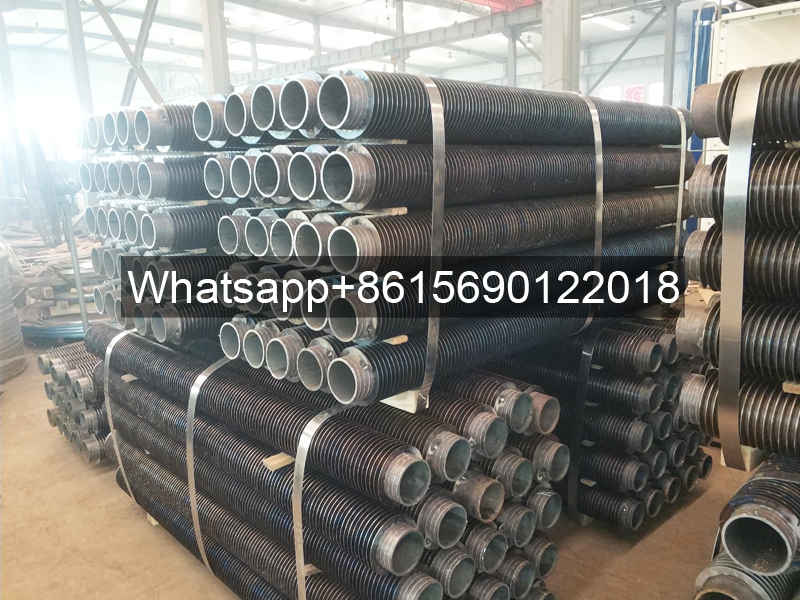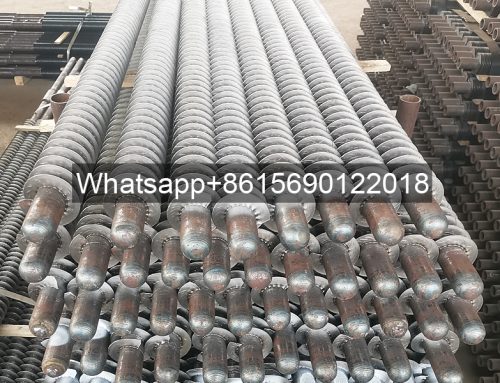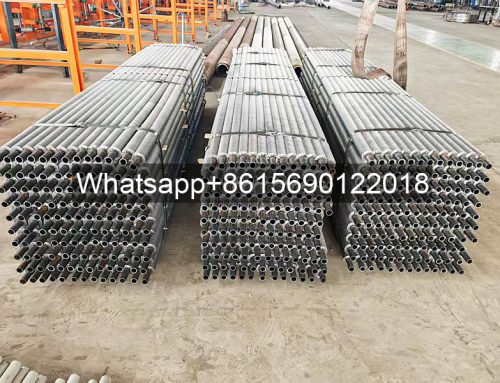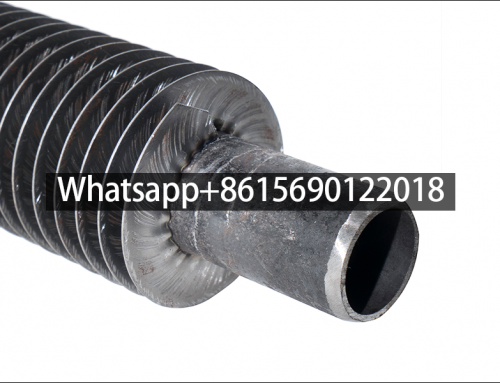Project Description

Product Name: Steel Fin Tube
- Leave Your Message
What is a steel finned tube?
A steel finned tube is a heat exchange element with fins attached to a standard steel base tube. Its structure primarily consists of two components: the base tube and the fins. The base tube is typically made of steel, such as seamless or welded steel. These tubes offer excellent strength and corrosion resistance, can withstand the pressure of the fluid, and effectively transfer heat. Fins are made of a variety of materials, including steel strip, stainless steel strip, and aluminum fins. The fins are tightly bonded to the base tube surface through processes such as high-frequency welding, mechanical winding, or rolling, forming an integrated heat exchange structure.
Steel Fin Tube Structure and Processing
Steel finned tubes consist of a base tube (usually a seamless steel tube) and fins (made of steel or aluminum). The fins are secured to the base tube’s exterior through processes such as high-frequency welding and three-roll cross-rolling. High-frequency welding is widely used due to its high degree of automation and excellent weld strength.
Basic Structure of Steel Finned Tubes
Base Tube Material: Carbon steel or stainless steel is typically used. Carbon steel is economical, while stainless steel offers superior corrosion resistance and is suitable for harsh environments such as chemical and marine applications.
Fin Type: Spiral, longitudinal, or corrugated steel strip fins are typically made of highly thermally conductive metals such as aluminum and copper, and are bonded to the base tube through processes such as high-frequency welding and mechanical expansion.
The shape and number of fins significantly impact heat dissipation. Common fin shapes include straight fins, corrugated fins, triangular ribs, trapezoidal ribs, and concave parabolic ribs. Straight fins are simple and easy to manufacture, but have relatively low heat dissipation efficiency. Corrugated fins improve heat dissipation efficiency by increasing airflow disturbance. Triangular ribs are lightweight and suitable for weight-sensitive applications. Parabolic concave ribs, while complex to manufacture, offer excellent heat dissipation.
More fins are not necessarily better. Excessive fins increase manufacturing complexity and cost, and can also lead to dust accumulation and difficulty in cleaning. Therefore, the number, shape, and thickness of the fins must be comprehensively considered during design based on actual needs.
Steel Finned Tube Materials and Properties
The base tube is often made of 304, 316L stainless steel, or high-temperature alloy steel, which offers corrosion and pressure resistance. The fins, which can be made of steel, aluminum, or other materials, achieve efficient heat dissipation by increasing surface area. For example, a steel-aluminum composite structure can improve thermal efficiency by 5%-10% while reducing weight.
How Steel Finned Tubes Work
Steel finned tubes operate based on the principles of heat transfer through conduction and convection. When a heat medium (such as hot water, steam, or thermal oil) flows through the base tube, heat is transferred through the tube wall to the fins, which then dissipate the heat to the surrounding environment. The presence of the fins significantly increases the heat exchange area, thereby significantly improving heat transfer efficiency. Compared to traditional heat exchange methods, this design, which increases the heat transfer area through the fins, enables faster and more efficient heat transfer.
Advantages of Steel Finned Tubes
High-Efficiency Heat Exchange: The fin design significantly increases the heat dissipation area, achieving efficiency 4-7 times that of conventional radiators.
Environmental Adaptability: Resistant to high temperatures, high pressures, and corrosive gases, suitable for harsh operating conditions such as boilers and power plants.
Structural Stability: Flange connections ensure a tight seal, and staggered or parallel tube bundle designs balance heat transfer efficiency and fluid resistance.
Applications of Steel Finned Tubes
Suitable for boiler heat exchangers, industrial steam heating, and greenhouse heating. For example, when high-temperature boiler flue gas passes through the base tube, heat is quickly transferred to the fins and radiated to the air, achieving efficient waste heat recovery.
In industrial settings such as workshops and factories, steel finned tube radiators can quickly and effectively reduce indoor temperatures, improve production efficiency, and maintain a healthy working environment.
In the textile industry, temperature and humidity control within the workshop is crucial. Steel finned tube radiators can quickly and evenly dissipate heat, providing a stable environment for textile production.
In high temperature and high pressure environments, such as blast furnaces and converters in the metallurgical industry, steel finned tube radiators can withstand extreme conditions, quickly dissipate the huge heat generated by the equipment, and ensure stable operation of the equipment.
Datang Fin Tube Technical Parameters
| PRODUCT | TYPE | TUBE MATERIAL | FIN MATERIAL | TUBE SIZE | FIN SIZE |
| Heat Exchanger Finned Tube | Extruded Fin Tube | All Kind of Material can be applied | Aluminum A1100 | 15.88~50.8 | 7~11.5FPI |
| Fin Height Max 16mmH | |||||
| L-Foot Fin Tube | All Kind of Material can be applied | Copper C1100, C1220 | 12.70~50.8 | 7~11.5FPI | |
| (Wrap On Type) | Fin Height Max 16mmH | ||||
| G-Fin Tube (Embedded Type) | Aluminum A1100, A1050, A1060 | ||||
| High Frequency Welded Finned Tube | A179 Carbon Steel Tube | Carbon Steel Tube | 12.70~160 | 1.5~7FPI | |
| Stainless Steel Tube | Stainless Steel Tube | 0.8~3.2mm. Thickness | |||
| Alloy Steel Material | Alloy Steel Material | ||||
| Integral Copper & Copper Alloy High Finned Tube | C12200, C11000, C70600 | C12200, C11000, C70600 | 15.88~22.23 | 5~9FPI | |
| Max 12mm. H | |||||
| Oval Finned Tube | Carbon Steel Tube | Carbon Steel Tube | All Size Available | 5~15FPI | |
| Stainless Steel Tube | Stainless Steel Tube | ||||
| Alloy Steel Material | Alloy Steel Material | ||||
| Copper & Copper Alloy Tube | Copper & Copper Alloy Tube | ||||
| Monometallic Fin Tube | Low Fin Tube | Carbon Steel, stainless steel, titanium, copper, brass, nickel alloy, etc. | — | 9.52~40 | 12, 16, 19 28 FPI, etc. |
| Turbo-C Tube | |||||
| Turbo-E Tube | |||||
| Corrugated Tube | All Kind of Material | — | 6.35~40 | 2~9FPI |






